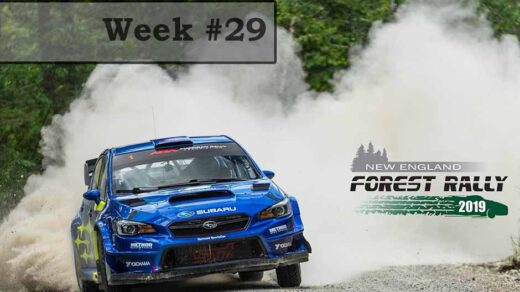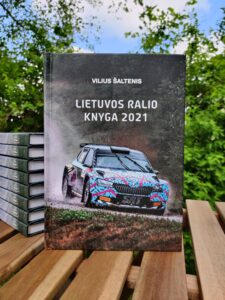Interview with rally engineer Bartek Rubczewski
This name will probably not be very familiar to many of you. I think only those who had the honor of working with Bartek will know him. However, it is already the case that all the media attention is given to those who drive these amazing cars on the special stages. Sometimes such small grains of attention fall on navigators and team leaders. And that’s it. However, behind the main crew, there is a huge chain of people, thanks to which the duo can achieve the highest results. These are technicians, mechanics, engineers, catering and service staff, logisticians, managers, and much more that I can’t even remember. This works in all automotive and other sports. Since one of the rally week’s slogans is “Rally from various angles”, this time an angle less known to the rally community – rally engineering – will be revealed.
We are talking to a neighbor from Poland, Bartek Rubczewski, who spent a lot of time in Lithuania and also worked in various corners of the world with Lithuanians and athletes from other countries.
Thanks to Justas Vičiūnas, for this open opportunity to have such an interesting conversation 🙂
Can You introduce yourself to our readers, who might not know who are you and what important work You do behind the main scene?
My name is Bartek Rubczewski, I work as a rally engineer. Some time ago I used to do a lot of events in Lithuania, so I know quite many people there and I’m always happy to come back. What I exactly do depends on the team. In the big team, I’m focused on preparing the setup for the test, running the test, preparing the rally plan, and running the rally (fuel calculation, tires plan, service support, data check, driving analysis, etc). Usually also pre-event and final scrutineering I must attend. In smaller teams sometimes also recce service and what else is needed. From this year it’s not allowed to drive through the stages before WRC/ERC events, so I skip, watching drivers’ recce videos instead.

Which part of your work gives you the most satisfaction? How do You cope with the advantages and disadvantages of being a freelancer?
I think every part of my job makes me satisfied. The best is if we win or the driver does progress, as expectations need to be adapted to reality. Being a freelancer allows me to freely choose with who I want to work.

Do you start your career by freelancing or do you become a freelancer step by step at first working for a company/team? Could you walk us through this process?
I started cooperating with a few different local teams, then I went to work for the Oleksowicz Intercars team (also as a freelance, but working for that team almost nonstop), which was a big step forward, and then started fully freelance.

Maybe You remember in your career the most unlikely solution to a problem, which against the all ods worked?
Hard to mention anything specific, at almost every rally we need to do something “special”. Especially WRC events which are really long and demanding. For example, last Acropolis rally, when during the first day of recce we needed to fix our broken recce car in the middle of nowhere, then I crashed our spare recce car, so always something. Then staying cool, and quickly finding the best solutions are most important.
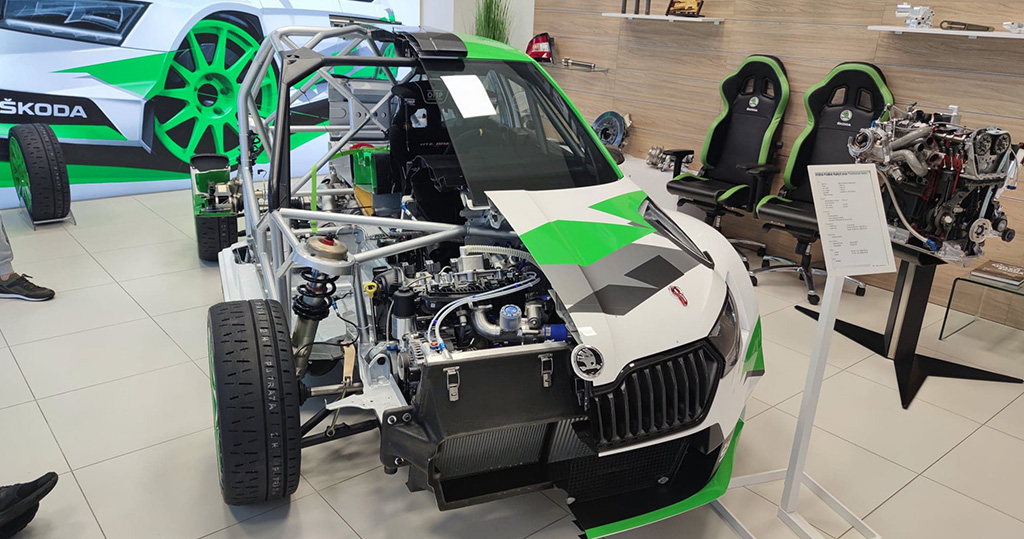
Those mainly invisible people like technicians, engineers, managers, service crew, and a lot of other people who make a lot of effort that really counts in the final result of the crew. How do You cope with that lack of attention, recognition, and appreciation from media, and fans?
I have no problem with it, and it allows me to focus on the job I need to do. Quite often I assist my drivers during pre-event press conferences, and I know how much time it costs them, so I’m happy I don’t need to do it myself. I think if the driver appreciates the job his mechanics, engineers, and the whole team is doing then nobody feels bad about being a little bit in the shadow. Personally, I don’t do it for attention, just for that crazy nice feeling of winning!
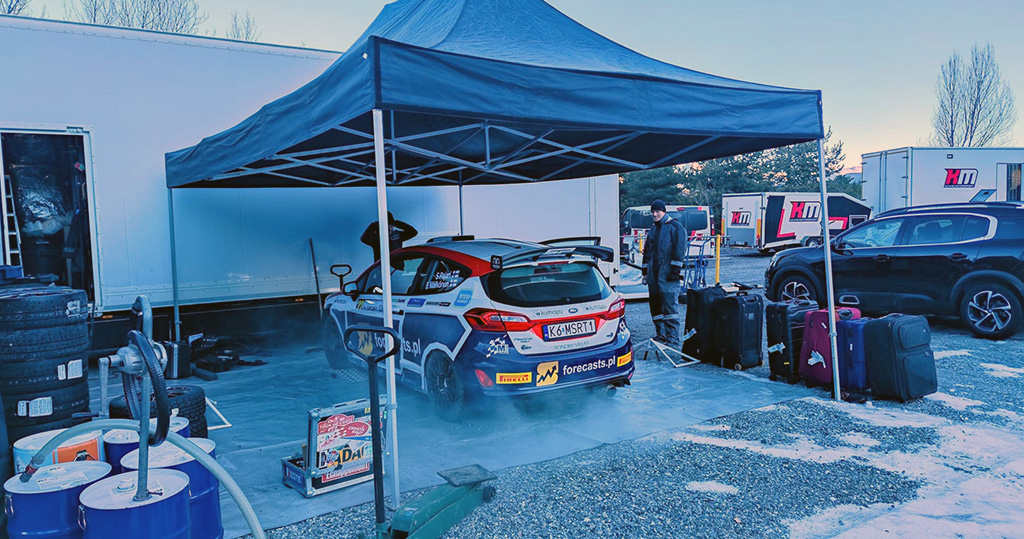
Can You tell us a story from your side about those very important days in Lithuania Rally history – Deividas Jocius start in Rallye Monte-Carlo behind Ford Fiesta WRC?
Yes, it was a nice to experience, pity that it was one off only, as plans were much bigger. A year before we did with Deividas Monte in a smaller (R2) car, we did also a few more WRC rallies, pity that the program didn’t fully work out also as some more rallies were planned. It just shows how difficult is to build some programs in WRC, a huge amount of money, planning, and preparations are necessary and it’s not easy to deliver good results immediately, so not easy to keep the program running. Regarding that event with the WRC car, we were quite unlucky with the weather, as if it would be changing more, more slippery/snowy parts we could be able to maybe decrease to gap to top runners. In stable conditions it was impossible.

How Deividas dealt with pressure and excitement, knowing that it was his dream come true? His onboards looked really clean and committed. How M-Sport team manages to operate with 4 cars and different level drivers at once? How do you operate as his engineer with other crew engineers and the whole team?
I think Deividas dealt really well with the pressure, obviously, the first stages were a bit stressful, but then it was clearly better. He drove well, definitely, just the level of top WRC drivers is so high they attack non-stop, so you need also a lot of experience and time in the car to try to catch them. M-Sport at that time was a big team and experienced with running many cars in one event, at same Monte they were running also R5 cars and all was working fine. They had enough team personnel to provide proper service for every driver. I know a lot of people at M-Sport so it was easy to cooperate, the main thing was to find a balance between where the team was pushing and between the best for our driver as we needed a car that would be easier to drive, more flexible, etc. But in the end, it worked fine, I think and we did a decent job.

You and Samsonas Motorsport. How did this cooperation start? How has this relationship evolved?
It started a long time ago, I think maybe around 2008. One of my customers at that time bought Honda equipped with Samsonas gearbox, so at some point, I visited the factory for some rebuild or parts, and then it happened. I started to sell Samsonas products in Poland and later help with some other things as in some areas I had some experience which we were able to use for Samsonas Motorsport. We did a lot of work on sequential gearboxes electronics and then many other things. I think quite quickly we started to have a good relationship with Martynas which lasts until now, I can clearly say he is a great guy and one of the very few friends I have. During all those years I get to know well many Samsonas Motorsport workers with who I have also good relations. Unfortunately, I don’t have now much time to visit them often, but always look forward to it!


As an engineer, with what type of cars do you find more interesting to work? Factory-made cars like R5’s or individually built like one Samsonas N5, Dacia R4? What main challenges are behind working with these two types of cars?
By far the best project was Samsonas build BMW M3X, a 4wd monster built in the factory in a crazy short time. This was an amazing machine, everyone learned a lot about building and then running it. When working on FIA homologated cars like R5, S2000, WRC, or lower class cars you need to focus more on extracting the performance, helping the driver be faster, etc. Of course, it also involves solving the issues, making the car faster, etc, but it’s more like fine tunning compared to prototype projects where you need to focus on many more things. I enjoy working on both types of cars.

Each time I was scrolling through your Facebook feed, I was always pausing on photos of that impressive MARC 2 Mustang V8. What is this project about and what is your relationship with Endurance racing?
Yes, Marc’s car was a crazy machine, actually, Mustang was generation 2 of the car, earlier we were running Marc 1 in BMW M2 chassis. The car was run by a Belgian team. It was based on famous V8 Supercars, Australian race series cars. Very advanced machinery, both mechanically and electronically. I’ve learned a lot working with those cars. It helped also in my work with rally cars. I did a few seasons with that Belgian team, not only with Marc cars. We were mainly running endurance events, with a couple of 24h races, which was demanding but a very nice experience, you need to be ready for over 30h to do whatever is needed, as usually a couple of hours before the race there was also something important to do.

I was planning to do an article about Transchaco Rally 2022, but due to lack of time never made it. Could you fill the gap and tell us about the exotic Paraguayan rally scene? How this rally was for You?
I did hundreds of rallies, national, European, and WRC. But nothing compares with Chaco. 2022 was my first year there, but surely not the last one. It’s so exotic that you can’t compare it even with the Safari rally. It reminds me a bit old type rallies, with services allowed between the stages, etc. 600kms of special stages in 3 days with R5 cars, big teams (close to 100 people), a few airplanes, helicopters which transport personnel, parts or provide communication. And all run in the real middle of nowhere – Paraguayan Chaco jungle. Very challenging from an engineering perspective as very long mileage, rough roads, high temperature, but also demanding physically – time difference/jetlag, heat, lack of sleep, lack of possibility to rest (as totally no infrastructure there in the middle of the jungle).



I must ask more. What Paraguay’s rallying culture is all about? How cars are prepared to endure so many kilometers, heat, sand, and very dense, hard, sharp flora? How crews must prepare for such an event? How do You feel after everything was over?
In Paraguay, as in the whole of South America, people are crazy about motorsport, rallying is really popular there and Transchaco is a legendary event, everyone wants to win it as then you’re becoming a legend. The event takes place in the jungle but there are thousands of spectators, they arrive from Asuncion and other bigger cities with pick-ups and stay in the jungle for a few days following the event. R5 cars participating in Transchaco need to follow almost 100% R5 rules, the only modifications allowed are the use of a snorkel to take air to the engine from above the roof (not because of water splashes but because of fesh-fesh sand), also protections on the front (protecting from tree branches). On the rear you don’t need to use the original bumper, you can also have custom tube protection, mostly used to pull the car out when stuck or to push with a pick-up truck. Another allowed modification is the ECU map, as the speed limit is set to 185km/h by the organizer so you can either use GPS controlled speed limiter or RPM based speed limiter. We used the second option in our Skoda, so we had an ECU map opened by the Skoda factory and we were able to make different RPM limiters for every tire type we planned to use (we had 3 options: normal asymmetric rally tire, MT type tire and AT type tire). Fine-tuning the limiter needs driving that 185km/h on the road and adjusting the limiter, sounds a bit crazy, but most of the teams do it like this. Crews are allowed to drive without race suits, so it’s a bit easier with the heat, this year Chaco helped later in the year, so it was winter there, so max temperatures were below 40degC, so it was not a total disaster. Personally, I had not much time to feel anything special, I came there directly from the ERC round in Liepaja and went back immediately after the event directly for the WRC Estonia event, so it was all very tight, and taking some rest during travel was the main focus.


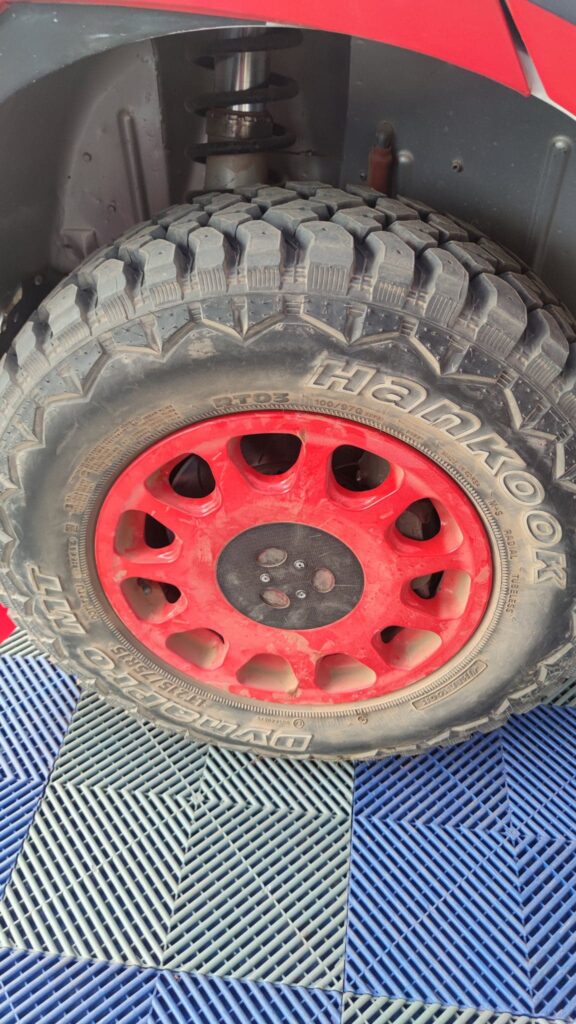
As you traveled a lot around the World, which regions do you find most easy and hard to work in? What culture suits your character most? Southerners – “Manjana” style or more conservative northerner? Or maybe something in between?
I think I adapt everywhere quite well, you just need to realize what reality you are and then just follow… Actually, professional teams all around the world are working on cars in quite a similar way, it’s everything around them is way different – when they start to work, how many breaks they do, how long breaks to eat, etc, etc.

Can You tell us about your work with Finn’s bright prospect – Sami Pajari? How does it go? Is it difficult to work with such a young athlete? What are the main differences in work between young inexperienced drivers and older ones, who have a lot of rallies under their belts?
I’m working with Sami already 5 years. He is extremely talented so cooperation is quite easy, he is also a very ok boy, so no tension between us, etc. The only difficult part is we fight at the top, so competition is big, but otherwise, it’s big pleasure and joy. He is young, but very focused on the job, and follows everything that happens around him, so not really feel like you work with a rookie. Basically, every driver needs some guidance, usually, younger ones need more, they also need more “nursing” and a bit different approach, but there is no big difference between young and old, it all depends on personality.


Teemu Asunmaa, Teemu Suninen, and more really big names. Is it harder to work with such names and their huge teams?
Honestly, I never had any issues when working with good and experienced drivers, both Teemus for example are really very normal and very nice people with who I have a lot of contact besides motorsport. More tricky is to work with some gentleman drivers who think they are better than they really are. Good ones are simply focused on doing a good job, not about pretending to be “rally drivers”. Luckily I can choose with who I work, so don’t need to struggle with bad ones.
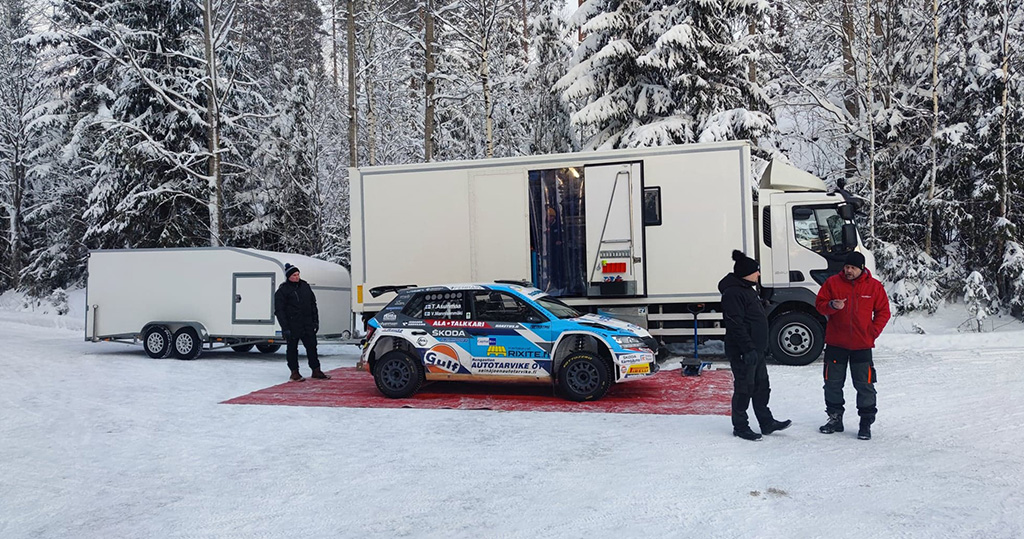
The rally, Hillclimb, Endurance racing, and probably more. Which discipline is closest to your heart? Why? Which is most challenging?
Definitely rallying! I started with it and I will do it always. This is something I know the best, I have loads of experience, so it’s also relatively easy. I learned a lot from racing, that was a very nice experience and also gave me a lot of things I tried to implement in rally work. There is much more attention to detail for example compared to rallying, etc. For me, racing was more challenging, especially at the beginning as so many things were new, but after a few seasons, it was getting much easier.

What kind of things or ideas You to took from circuit racing or other disciplines and managed to implement in your rallying work? Does it always work? Maybe something just didn’t fit rallying philosophy compared to other disciplines?
I think the main thing was attention to detail. We were always running our rally cars well prepared, but going into the racing environment you see it can be done a bit better. Just simply the fact that there is no way to test the car before going to the circuit, sometimes directly for qualifying makes you add something extra attention to detail. Also, I started to use more computer simulations – like tire usage, more precise and detailed fuel calculations, more detailed weight calculations, based additionally on tire wear, etc.
Everything in racing is also much clean, neat, and tidy, a bit of this you can transmit to rallying, but obviously, you can’t expect to have a gravel rally car so clean as a race car.

What was the most exotic or interesting car/project You worked with?
Sure most of those we mentioned already, so it was Samsonas M3X, both Marc cars, I have really good memories with Citroen DS3 R5 also.

The M3X was a huge thing in Lithuania – it took a lot of attention and it left spectators in awe. Tell us more about this car. Why it was so special?
It was special in many aspects, first of all, it was built by the Samsonas Motorsport team, almost everything in-house or at least using its own ideas. The sound of the engine, power, and traction, combined with Martynas driving skills made it most special I think. When we were with that car in Ireland with many WRC and R5 cars around it also drew the most attention, as it is really unique car and sounds better than anything else.

As I remember, French cars Citroen DS3 R5 and Peugeot 208 R5 was with not the best reputation and had some engine-related flaws. Fix me if I’m wrong. The Peugeot project was closed and DS3 was replaced by C3 R5/Rally2. Tell us about your experience with DS3 R5. Was C3 an evolution of DS3 or a brand new project?
DS3 and 208 were exactly the same cars, mechanically only difference was prop shaft length. They were very demanding cars to run and maintenance was very complicated. In the beginning, there were many small issues, with engine cooling mainly. But it was a good school, as if you were able to run it on the decent level then every other R5 car was quite easy. And on the tarmac, those cars were really fast and enjoyable to drive. C3 was a completely different project and has nothing in common with DS3 – different engine, transmission, suspension providers, etc.
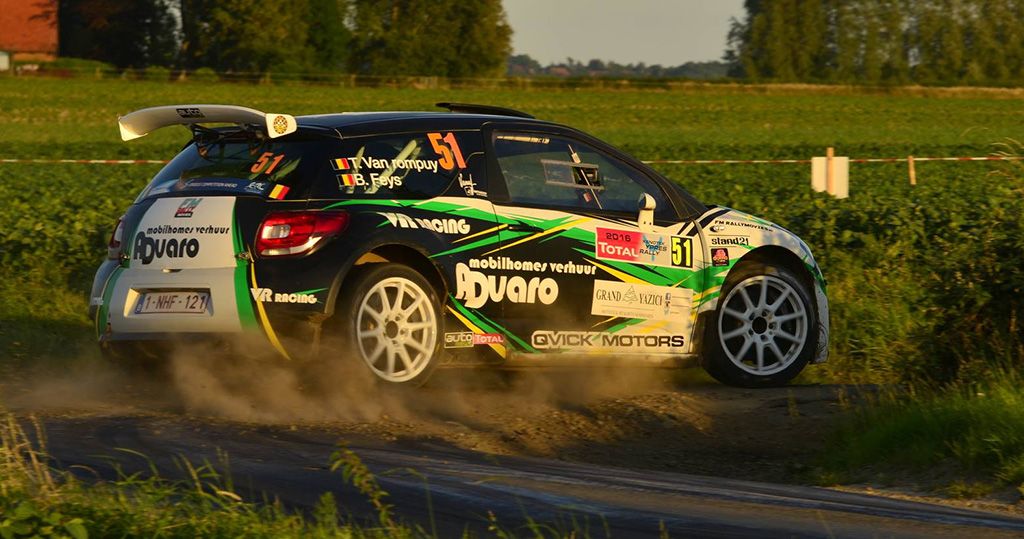
In what kind of environment do you like to work most? Big rallies such as WRC, 24H endurance races, or smaller national rallies and events?
Definitely, a WRC event with good drivers is the most enjoyable and challenging. It starts usually already from Monday’s tests, so it’s a week of hard work at the event, plus a couple of days of preparations before. But I still enjoy a lot doing smaller events, always a good place to meet friends and usually more time to chat with them, as smaller events are less demanding.

I believe I missed some really interesting fields of talk. Maybe You have more interesting stories to tell about your adventures in freelance engineering work?
Nothing special comes to my mind, almost always something happens. Sure most crazy was Chaco, with just all the time swapping plane to helicopter to be on time before and after every stage. Other than that this job really demands a lot of dedication and determination. And involves extensive travel, normally 100+ flights per year for already almost 10 years, etc, etc.

Photos – Bartek Rubczewski, OLEKSOWICZ.PL, VR Racing, Markelevičius photography, Sami Pajari FB, Janis Asaris





